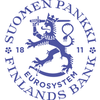Inflation rate expected to stabilise at the target – Europe must find ways to increase productivity

The inflation rate in the euro area is in the process of stabilising at the European Central Bank’s (ECB) 2% target. Together with the favourable trend in employment, this will support the purchasing power of households. By contrast, manufacturing in the euro area has been weak, and its problems seem in many respects to be structural. If significant reforms cannot be achieved, a more permanent weakening in manufacturing would threaten the euro area's competitiveness.
Inflation has continued to come down in the euro area. Having peaked at 10.6% in October 2022, inflation has since fallen and was at 2.2% in August 2024. Wage inflation and services inflation have nevertheless remained fairly high. The inflation rate is expected to stabilise at the ECB’s 2% target during the course of 2025.
In September, the ECB’s Governing Council reduced its policy interest rate to 3.5%. “The direction of monetary policy is clear: interest rate cuts have begun and our monetary policy stance is becoming less restrictive. The pace and scale of the rate cuts will depend on the Governing Council’s overall assessment on a meeting-by-meeting basis,” says Governor of the Bank of Finland Olli Rehn. The Governing Council will continue to base its monetary policy decisions on an assessment of the inflation outlook, the dynamics of underlying inflation, excluding energy and food prices, and the strength of monetary policy transmission.
Growth in the euro area economy has continued to be slow this year, and industrial output has been weak. An important factor in this has been the increase in energy costs, which has been greater than in other key economic regions. Labour productivity growth in the euro area has in any case long lagged behind that in the United States.
Despite strong headwinds, the euro area economy has avoided a recession and is now picking up, as earnings growth and the drop in inflation strengthen households’ purchasing power and consumption. The ECB’s September projections show that the economy will grow by 1.3% in 2025 and 1.5% in 2026. Employment growth is strong: the number of people employed in the euro area is about 7 million more than at the end of 2019.
“An important conclusion from the outlook for economic growth, employment and inflation in the euro area is that monetary policy has been relatively successful in bringing inflation down,” says Rehn. When monetary policy slows inflation down, it generally comes at a cost in the form of a slowdown in economic growth and a deterioration in employment. But this time the cost – at least for now – has been smaller than in previous cycles of interest rate rises.
At the same time, the weakness of the growth in the euro area economy has turned out to be, in part, structural. Productivity must be increased, because Europe’s population is ageing, green investments require funding, public debts and deficits are large, and defence spending needs to be raised. This calls for a strong, unified response from the EU. “The Draghi report is a necessary wake-up call to all Europeans. It is a clear-sighted and brutally honest diagnosis of the reasons for low growth in Europe's economy and will provide a good basis for the next Commission work programme,” emphasises Governor Rehn.
- Bank of Finland Bulletin publication website (in Finnish)
- Presentation 1 October 2024, Governor Olli Rehn (in Finnish)
- Presentation 1 October 2024, Head of Division Markku Lehmus (in Finnish)
Keywords
Links
Bank of Finland
The Bank of Finland is the national monetary authority and central bank of Finland. At the same time, it is also a part of the Eurosystem, which is responsible for monetary policy and other central bank tasks in the euro area and administers use of the world’s second largest currency – the euro.
Subscribe to releases from Suomen Pankki
Subscribe to all the latest releases from Suomen Pankki by registering your e-mail address below. You can unsubscribe at any time.
Latest releases from Suomen Pankki
Eurosystemets penningpolitiska beslut18.12.2025 15:23:32 EET | Beslut
ECB-rådet beslutar om penningpolitiken i euroområdet. ECB-rådet beslutade idag att hålla de tre styrräntorna oförändrade.
EKP:n rahapoliittisia päätöksiä18.12.2025 15:23:32 EET | Päätös
EKP:n neuvosto päättää euroalueen rahapolitiikasta. EKP:n neuvosto päätti tänään pitää EKP:n kolme ohjauskorkoa ennallaan.
Kutsu medialle: Suomen Pankin tiedotustilaisuus 19.12.2025 Suomen talouden näkymistä17.12.2025 09:00:00 EET | Kutsu
Elpyykö Suomen talous? Miten kauppasota ja maailmantilanteeseen liittyvä epävarmuus vaikuttaa talouskehitykseemme? Mitkä ovat julkisen talouden näkymät?
Aleksi Grym blir avdelningschef för Finlands Banks betalningssystemsavdelning16.12.2025 16:42:15 EET | Pressmeddelande
Pol.lic., ekon. mag. Aleksi Grym har utnämnts till avdelningschef för Finlands Banks betalningssystemsavdelning från och med den 1 mars 2026. Utnämningen gäller för en period på fem år.
Aleksi Grym maksujärjestelmät-osaston osastopäälliköksi16.12.2025 16:42:15 EET | Tiedote
Suomen Pankin maksujärjestelmät-osaston osastopäälliköksi on nimitetty VTL, KTM Aleksi Grym. Nimitys on tehty viiden vuoden määräajaksi 1.3.2026 alkaen.
In our pressroom you can read all our latest releases, find our press contacts, images, documents and other relevant information about us.
Visit our pressroom